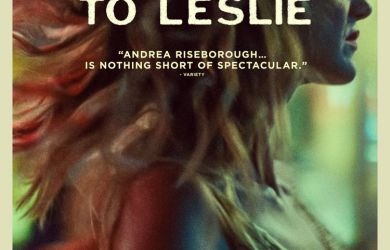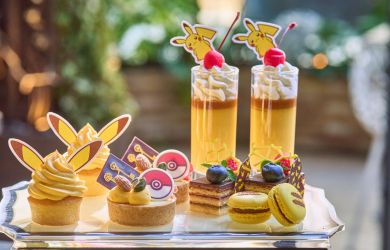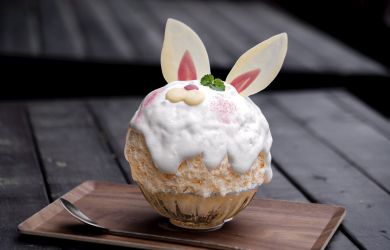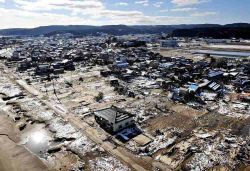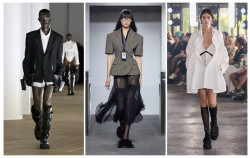
November 13, 2008
Showa Sweetness
Nostalgia for the postwar era has revived the market for vintage snacks and toys. From 200-year-old shops to gleaming mega-malls, everything old in Tokyo is new again
By Metropolis
Originally published on metropolis.co.jp on November 2008

In the ’70s-obsessed climate of the West, the revival of retro style is nothing new. But recently, Japan’s baby boomers and younger hipsters have fallen in love with their own period of nostalgia—the Showa Era. Countless TV shows evoke tropes from the ’30s to the ’70s, and several movies—including the blockbuster Always: Sunset on Third Street—have capitalized on this longing for things past. Most recently, the multimillion-selling manga 20th Century Boys, about a group of guys who try to save the world from falling into chaos, was adapted into the most expensive Japanese film project ever produced. And the central period of its plot? Tokyo in the ’70s—replete with pink movie theaters, cheapie toy stores and dagashi candy shops.
The childhood portrayed in 20th Century Boys is one that still exists in Tokyo, though now in heavily diminishing pockets on the city’s east side. Here’s a guide to vintage sweetshops, classic toy stores and atmospheric restaurants that retain a distinctively Showa flavor.

In most neighborhoods in Japan, you can still find an obachan running a tiny stand that serves up dagashi: cheap varieties of candy that sell for a handful of ¥10 coins. These shops can be tough to find, especially for foreigners who don’t have a wistful hankering for Bontan sugar cubes or dried, flavored eel on a stick. For the curious, though, Tokyo offers several places to overindulge your sweet tooth while getting a taste of a bygone era.
Dagashi—distinct from wagashi, refined Japanese sweets like yokan or warabi mochi—originated in the Edo period. Created as a food for the common classes and using inexpensive ingredients like unrefined sugar, Edo-era dagashi were quite different from the chocolate balls, artificially flavored powders, and other colorful snacks of the Meiji period. In the Showa Era, dagashi became popular not just because they were cheap, but because some candies included lottery tickets to win cheap toys or prizes. These could be redeemed at shops often run by elderly women whose function in the neighborhood was not only to hawk candy, but sometimes voluntarily baby-sit children and provide them with cheap meals in the back of the store.
Of course, with food and safety regulations, few such dagashi shops now exist. Even more were pushed out with the advent of conbini and supermarkets, and then entire districts that had trafficked exclusively in wholesale dagashi and toy shops began to be razed to make way for development. The three biggest dagashi yokocho, or shopping streets, could be found in Nippori, Ueno and Kinshicho. The good news is that, although nearly all of the shops were pushed out when more modern structures went up, there are still large retailers in each neighborhood.
The smallest of them, Niki no Kashi, has several stores in the Kanto area, but its Ameya-yokocho shop, standing proudly next to fish stalls and knock-off handbag kiosks, has been around for decades, selling dagashi alongside ethnic snacks for foreigners, and less gourmet snacks for pets.
Kinshicho and Nippori still have two of Japan’s largest dagashi suppliers in Ewatari and Inokuchi Shoten. Both shops sell their wares individually or in bulk. Inokuchi is one of the few dagashi shops that has remained in its original location—it’s been in Nippori for over 50 years and supplies over 200 kinds of snacks, most selling for under ¥70.
Though Ewatari doesn’t have the same history, it is a survivor of the formerly prosperous candy and toy district in Kinshicho. The shop is easy to spot thanks to its location in a multistory building with a giant umai bou cracker painted in bright blue. Fittingly, Ewatari carries a massive selection of umai bou, a long, spongy, airy cracker that comes in 13 different flavors, from classic chicken curry and beef tongue to new varieties like takoyaki and chocolate. All are priced at ¥10 each, or 30 sticks for ¥252.
For something even more traditional, however, venture out just past Ikebukuro to Zoshigaya. The area looks like something straight out of a Mike Hammer film, but a short walk from the station towards the Kishi Bojin park reveals the oldest dagashi shop in the Kanto region: Kamikawaguchi-ya, which has been in business for 227 years. The 13th generation is currently operating the small stand located only steps away from Kishi Bojin temple. Ms. Kamikawaguchi might not be able to whip you up a meal, but the kindly obachan does serve an exceptionally fresh kinako-bou (mochi rolled in sesame powder and served on a stick).
A childhood with snacks and no toys wouldn’t be much of a childhood at all. The Japanese appreciate this, which helps explain why entire neighborhoods of the city were formerly given over to playthings for the young.
Nippori’s fabled Tonya Gai toy district is, sadly, not what it once was due to the growth of modern skyscrapers around the station. Dozens of vendors have closed up shop and retired, but two family-run operations managed to survive—and actually move into one of those skyscrapers.
Murayama Shoten and Ooya Shoten have been in business for nearly 60 years, and while they also offer dagashi, their specialty is toys sold in bulk. The usual staples of cheap multicolored soccer balls, action figures, and toy cars are always present, but checking in periodically can reveal occasional new finds.
The Kuramae toy district, located between Asakusabashi and Kuramae stations, is slightly more populated, not only with shops and shoppers, but also with a greater selection of toys and goods. Shibasaki Shoten is one of the largest stores in the area and, having been in business since 1927, one of the oldest. It’s been updated since then—the owners even run a blog on their website—but continues to stock even the oldest toys, from balloons and marbles to kendama ball-catching games and taketombo flying propellers. Shibasaki also has an assortment of sports toys and games, as well as lottery toys where a lucky customer might buy one and get another free.
Some other notable toy shops in the area are Masuken Shoten and Komoriya. The former specializes in a wide variety of ¥100 toy-and-snack combos, as well as dozens of magic tricks and more upscale games like mahjong and shogi. Komoriya offers an enormous collection of fireworks and boasts a history even longer than that of Masuken’s or Shibasaki’s—94 years in the same location. Lastly, Sakai Shoten is a bit beat-up and sometimes isn’t staffed—the barber next door keeps an eye on the shop when the owner steps out—but don’t ignore it, as it can supposedly offer prices that sometimes bests Komoriya on its already cheap toys.

Recently, savvy businessmen have capitalized on the Showa boom, setting up a variety of dagashi and toy emporiums located, anachronistically, in upscale shopping malls a short distance from major stations. Ikebukuro’s Sunshine City and Yokohama’s World Porters feature two such dagashi shops, dubbed Itchome Ichibanchi and Haikara Yokocho, respectively. The latter is considerably wider-ranging—every shopper gets a colorful plastic pail to fill with as many candies as possible, and the selection of obscure snacks, from beer-flavored yokan to multi-flavored haichu, is enormous. The shop has games out front for children to waste their yen on, while the register area is littered with NameNeko paraphernalia—a marketing phenomenon in the early ’80s that plastered images of cute kittens decked in bosozoku biker gang garb on bromides, calendars and sketchbooks.
A bit further afield, full-scale Showa-town replicas can be found in Shibamata and Odaiba. Shibamata’s Haikara Yokocho (the word haikara, or “Western-tinged,” became a buzzword in the ’60s) is even more impressively detailed than the store of the same name in Yokohama—it’s an actual mini-district designed to transport you to the mid-Showa era. Shops sell dagashi and toys, but also offer festival games like goldfish catching and slot-car racing. There’s an impressive museum on the history of dagashi and Japanese toys, as well as the Sunset Theatre, which hosts magic shows and concerts featuring the music of ’70s-era folk singers like Kenichi Nagira and Nobuyasu Okabayashi, a.k.a. the “god of Japanese folk.”
Odaiba’s Itchome Shotengai is possibly the most impressive of all. Though located in the Decks shopping plaza, this complex meticulously recreates the look and feel—or at least the nostalgic memory—of an urban Showa neighborhood from the ’60s and ’70s. There’s an old-style arcade with miniature bowling, fake pachinko, a shooting gallery, tons of gachapon machines, and an assortment of first-generation video games. A restaurant has been crafted in the mold of a school cafeteria, serving tasty yoshoku like chicken rice and shrimp pilaf, with desks as tables and lockers stuffed with knapsacks. Ramune and snow cones are available right next door, and there’s even a mini haunted house—a staple of all neighborhoods where kids traditionally tested their courage. A small park that generates automated sunsets every few minutes is set alongside a model of a Japanese living room, with smells of home cooking and the sound of shakuhachi filling the air.
And, of course, there’s lots and lots of dagashi—the front of a shop called Ebisuya has an entire buffet of ame (“sugar candies”) featuring dozens of styles and flavors for only ¥250 per 100g.
